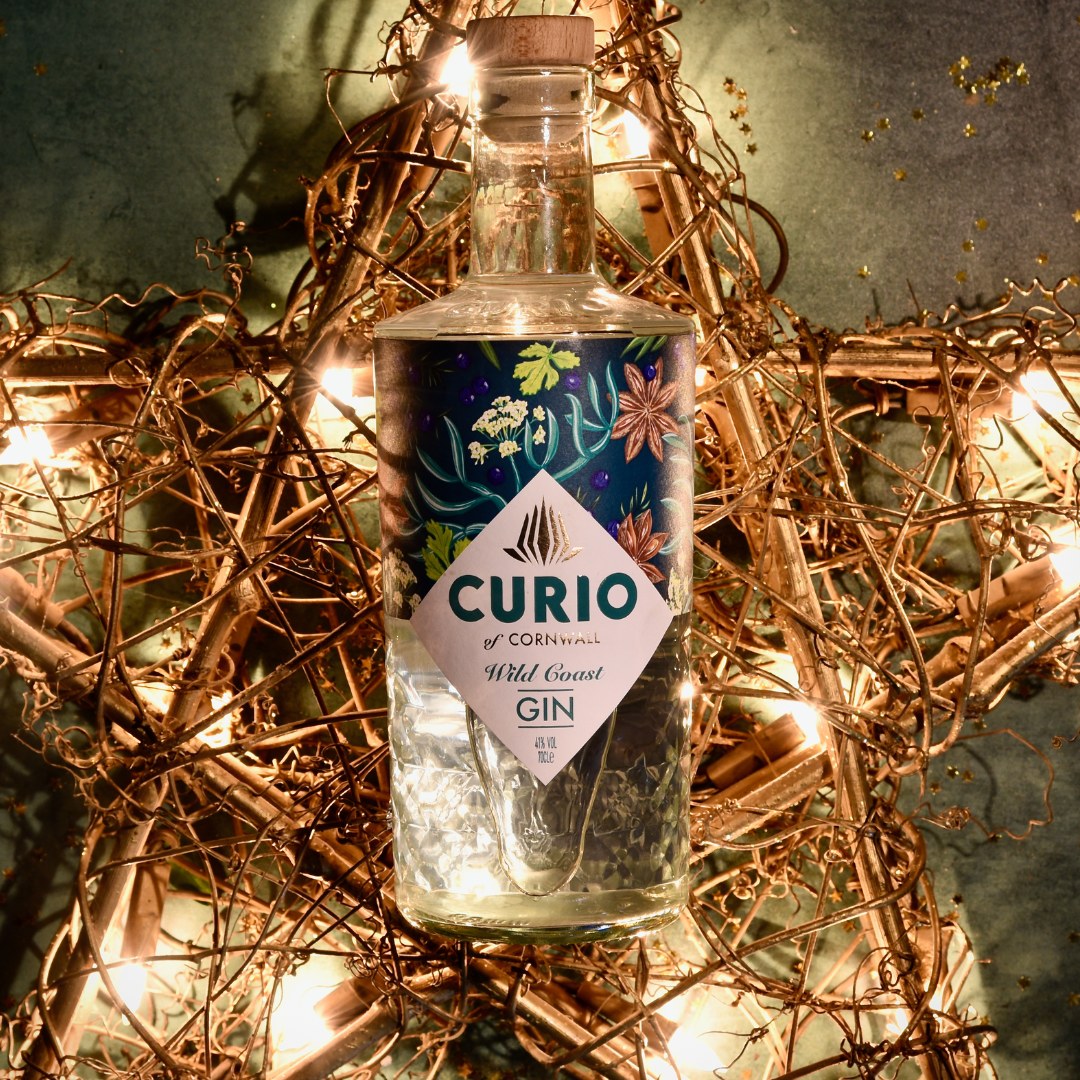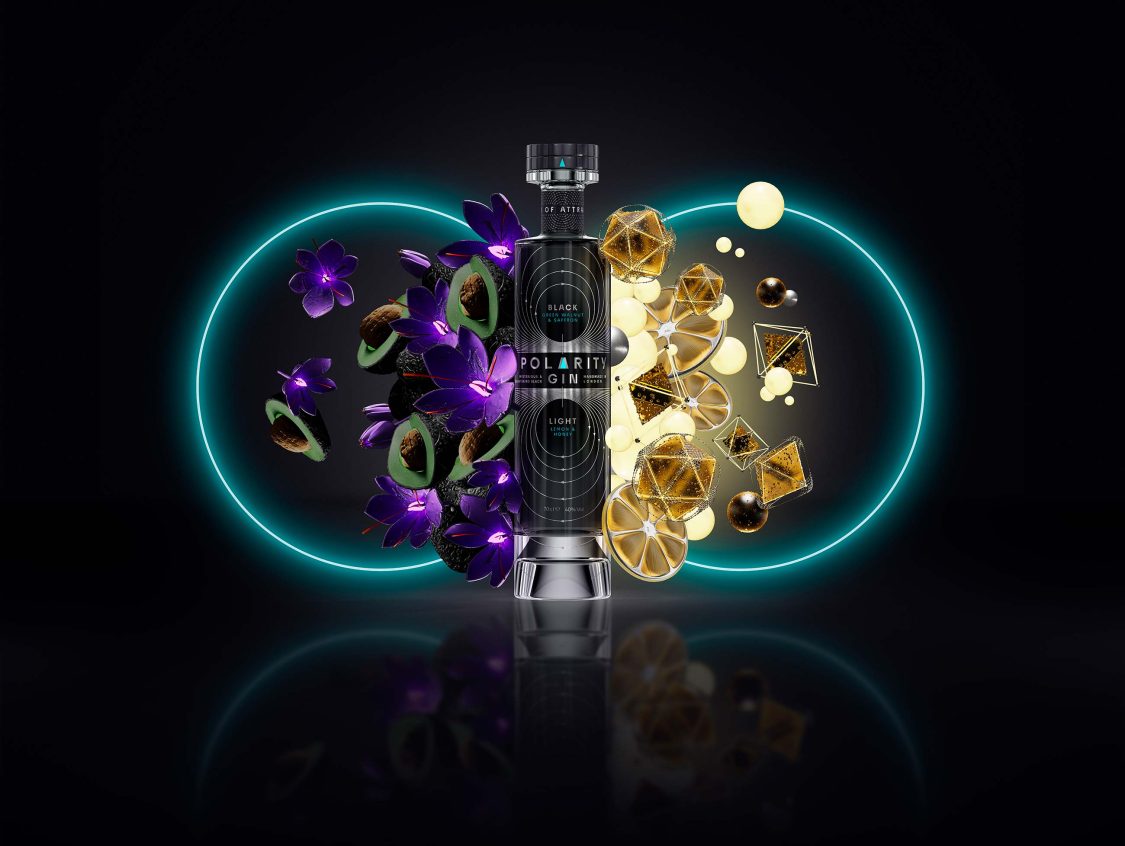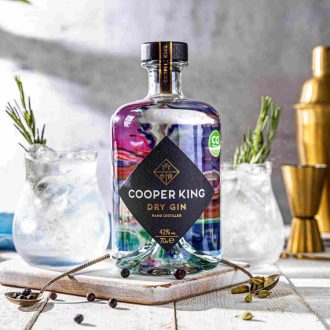
Linden Leaf Botanicals Ltd 1 Mercers Row, Cambridge CB5 8HY, UK

Linden Leaf Gin amazing new taste
Our Aims
Linden Leaf organic spirits and essences are crafted and tuned at the molecular level. We strive to find amazing new taste experiences by bringing together the traditional craft of distillation with state-of-the-art technology.
In what is becoming a crowded market, we aim to make some of the tastiest, most interesting spirits you can find. We offer spirits which are incredible served neat on ice, taste great with mixers and can make the most amazing cocktails.
We also produce a range of Single Note essences, each showcasing a particular flavour or ingredient which we feel deserves a bottle to itself.
All of our products meet the stringent requirements for organic certification by the Soil Association. We believe in supporting organic farmers and producers: not only because of their ideals but also because they often make the highest quality produce.
Beginnings
The three of us are Cambridge scientists and engineers with a passion for food and drink. All of us are avid cooks with a real love for ingredients and innovative cooking methods. For many years we had been discussing the science behind extracting tastes and smells.
One evening over a gin and tonic, we were talking about how molecular gastronomy has revolutionised taste combinations in food. This started us thinking about how to make better extracts from herbs, spices, fruit and vegetables.
Could you separate each ingredient into different flavour notes? Was there a way to understand how these notes could be combined harmoniously? We had a few ideas and so Linden Leaf began.
A Steep Learning Curve
We started by exploring ingredients and extraction methods, learning about flavour science and analysing our extracts molecule by molecule.
Our blends were initially led by our own noses and palates, and then honed through a major campaign of taste testings with our friends, and their friends, and their friends, and probably even some of their friends, too. With backgrounds in Big Data, please forgive us for being nerds when it comes to testing and analysis.
A big “thank you!” to everyone who gave us so much help with the taste testing.
We learned so much. How small changes in the extraction process can vastly alter the elements of flavour you pull out. How many unexpected things taste of orange. How some people think coriander tastes of soap. Oh, and how amazingly nasty some tonic waters taste.
About Us

Mukund
Mukund can’t make up his mind what he wants to do. The result is that he does far too many interesting things to list here. He met Matthew as an undergrad in Cambridge and through their PhDs they eventually came to like each other enough to set up a software company together.
These days, Mukund spends a lot of his time travelling around the world tasting amazing things. He loves Linden Leaf as it is another great excuse for him to visit Japan so that he can find incredible new ingredients for us to use.

Matthew
Matthew is fortunately unique. He has been writing software commercially since he was far too young and he did his PhD in Astrophysics in the same year as Mukund in Cambridge.
After that, he worked with Mukund in mathematical software before leaving to set up a Cambridge start-up fund with some of his other friends. He loves cooking, has a ridiculous collection of wines and spirits, and likes few things better than to stick his nose in some new extract of an exotic botanical.

Paul
Paul used to work for a very big company, running very big projects that did very clever things. One of these projects led to him working with Mukund and Matthew.
Despite that, the project was a resounding success. After a while, Paul decided that smaller things might be even more fun, so he returned to Cambridge to play cricket on grass wickets again.
He loves cooking complex dishes and is always adjusting the recipe to take it up a notch. With the new essences, he now claims to be able to get 2.5 notches.


Molecular Craftsmanship
Linden Leaf spirits and essences are crafted and tuned at the molecular level.
We’ve applied the latest cold extraction technologies, allowing us to isolate the most delicate notes from the finest ingredients: whether wild, seasonal botanicals foraged from around Cambridgeshire, or rare spices sourced from the far side of the world.
Through painstaking research, we’ve tailored our extraction process to pull precisely those scents and flavours we want from each ingredient. That means we can fine-tune every aspect of our gin with extraordinary precision.
All of this high technology know-how and scientific rigour has been in the service of a very old-fashioned master: our noses and our taste buds, capably assisted by our volunteer army of taste testers. It’s been a long and satisfying journey.

Cold Extraction
Using advanced laboratory equipment, we can reduce the pressure inside our still to just a tiny fraction of atmospheric pressure: much lower than the top of Mount Everest. This means even the most delicate ingredients can be extracted at very low temperature, avoiding heat damage.
In almost every case, we extract each ingredient by itself, allowing us to tune the parameters to obtain exactly the notes we want. This means we can retain the just-cut scent of fresh ingredient: the invigorating zing of citrus zest, the cooling aroma of watermelon.
Like everything else, it’s horses for courses. As you increase the temperature, different flavours come out and sometimes they’re what we want for the blend. For example, warm extracted liquorice and coffee have richer, deeper notes that are perfect for some blends.
Nose 2.0
Although the best human noses are incredible analytical instruments, they struggle to pick out every note in a complex mixture. They also cannot tell you what exactly molecule is responsible for each smell. However, we found there is a way to turbocharge the human nose.
Gas chromatography (GC) is a laboratory technique for separating a mixture into all of its components. You evaporate a tiny bit of your mixture and push it down a long, thin glass tube with a special coating, called a column. Different molecules move at different rates so at the far end, so each type of molecule comes out at a different time.
Usually, you put an electronic detector at the end. But we found you can also put a human nose. A patient sniffmaster’s nose can, miraculously, pick out the smells from even the tiny amounts coming through. So peaks can be labelled “lemon zest” or “lilacs” or sometimes “horrible”.

Molecular? Really?
Yes, really. Behind the art of extraction and blending are molecules that react with receptors in our noses and tongues.
Together with GC and our noses, there is an amazing bit of technology called a mass spectrometer (MS) which can help us work out exactly what molecules make each smell. This uses an electric charge and a powerful magnetic field to measure the mass of each molecule very precisely.
You put one at the end of a GC to make a GC-MS and, as each separated type of molecule comes out, it tells you the mass and how much there is. It measures the mass so precisely that you can usually work out the exact structure of the molecule.
By picking the right source of a particular botanical and then carefully tuning our extraction parameters, we can maximise the yield of the molecules we want. We can even make sure that subsequent batches are consistent. Molecular craftsmanship.
Building a Blending Atlas
We are building a library of the key flavour molecules across all the ingredients we can find. Along the way we are learning how to tune the extraction process to pull out more or less of each molecule.
Crowd-sourced tasting feedback is enabling us to model how people perceive blends of these molecules. We are quantifying the harmonies and occasional dissonances between flavour notes and determining the combinations which people like best.
Will this model make blends automatically? Not soon, anyway. Instead it is like a blending atlas, helping us explore scent and taste elements which work well together and suggesting possible botanical recipes to make that blend.

Botanically Broad-Minded
What are botanicals? Well, we think anything that has an interesting scent or flavour.
We hunt locally and globally for the best conventional spices, herbs and fruit: from dried juniper berries to fresh Buddha’s hand lemons. We also try just about anything else we can think of. How about oak moss? Walnut husks? Seaweed? Sprouting potatoes?
Each ingredient is vastly different between cultivars, growers and seasons. Compare a supermarket musk melon to a Yubari King from Japan and you’ll hardly believe they’re related.
The extracted notes often surprise you compared to the immediate smell or taste of the raw botanical. It is sometimes the unripe fruit or the inedible skin that has the most interesting essence. Very occasionally, the bulk dried spice has a more useful perfume than its artisanal, hand-picked cousin. It’s a good thing we love experimenting.
Organic Produce
All of us at Linden Leaf are all strong believers in minimising our footprint, promoting ecological balance, and conserving biodiversity. From the outset, we wanted to support organic farmers and producers: not only because of their ideals but also because they often make the highest quality produce.
From our own experience, we knew that organic fruit and vegetables were often the highest quality: grown less intensively and by farmers who believed in delivering the very best. The qualities that make organic produce attractive for eating are even more important in producing gin and essences: the greater depth of flavour and aroma lets us deliver the unique molecular flavours that we love.
We were surprised that even when selecting alcohol, the organic alcohols tasted the best: smoother and more neutral, with an excellent mouthfeel.
We are proud that all of our products meet the stringent requirements for organic certification by the Soil Association.

A Tale of Juniper
Juniper berries are the cornerstone smell and taste of gin.
What amazed us was not only the number of juniper species that produce edible berries—California and Phoenician juniper, to name just two—but also the huge variation across different berries from even common juniper.
Close to home, we tried berries in tiny glass jars from supermarkets, bulk catering supplies, those sold as “gin botanicals” and even those picked wild. Further afield, we hunted for berries in markets around the world.
The mix of juniper we use in each gin is carefully tuned for that blend. Which species, how ripe the berries were, how heavily they were dried, how they were prepared and how they were extracted: tremendous complexity in our core botanical.

Water and Alcohol
For all the talk of botanicals and molecular craftsmanship, almost everything in a spirit bottle is water and alcohol.
We do not distill our own alcohol yet. We figure we are better off looking at the nuances of flavour science than bulk distillation, and there are many excellent manufacturers of high quality alcohol for spirits use. Despite being distilled six or more times, there is still an element of flavour to each product.
The same with water. We can use repeated reverse osmosis to produce almost perfectly pure water. Sometimes this tastes better in a blend and sometimes the different mouthfeel of a mineral water is best. We never expected that the gap between pure water and a smooth, silica-rich mineral water would be this large.
Like everything, we make the decision on the basis of taste testing for each blend.
Sipping Gins
When we were tasting gins and making blends we had a bit of a dilemma. To withstand the strong taste of many tonics, a gin has to have quite a flavour kick to it: we don’t mean rough or unsubtle but at least a little muscular.
As we started making more complex blends with structure in the mid-notes and finish, we wanted to let the full length come through. When we did our tastings, more and more of the comments on these blends came back with “this is too good for tonic”. So our blend-crafting led us to Sipping Gins.
Sipping Gins have immense and delicate flavour profiles and are perfectly at home with tonic. Personally, we also like to enjoy them neat on ice, or as a top shelf ingredient in a stunning cocktail.

The trend of sipping Gins
Ultimate Elixirs
As part of our research we looked at traditional perfume making, and the attars of India. These are often made by snail’s pace extraction using a very long vapour path—sometimes many metres. The overall distillation process is painstaking and can last for days.
When we tried a similar approach with botanicals, we achieved some of the finest, most delicate scents yet: tendrils of perfume that are drawn out as individual, tantalising notes. Running the whole apparatus cold avoided heat damage, and the slower we ran the process, the better our extract smelled and tasted.
Many further experiments eventually led to a viable production process and a botanical blend which delivered a harmonious and exquisite gin. Unlike our other products, we mix the botanicals before extraction and then produce tiny batches drop by drop over days (and sometimes weeks) in our custom extraction configuration.
These Ultimate Elixir gins are an incredible symphony of flavours and scents.
Single Notes
Our inspiration to set up Linden Leaf wasn’t just gin. We also wanted to see what individual extracts we could make for cooking and cocktails. We imagined a few drops that would add the scent of the the freshest herbs to a dish, or the flavour of perfectly ripe fruit to a cocktail.
As we explored the world of botanicals and fruit we weren’t disappointed. If anything, we were surprised by how many individual ingredients could be coaxed to produce a truly delicious extract with the right combination of preparation and process.
Our Single Note extracts showcase an individual ingredient or a set of ingredients which we believe are harmonious. What to do with them? Well, we had mixologists fighting over our samples to make complex cocktails. Matthew says they are great on ice as a fine after dinner drink or aperitif. Paul thinks they’re superb to cook with. One tester even said they loved the smell so much they would like to use it for a room diffuser. I guess it’s up to you?
“8” Navy Organic Molecular Gin 50cl
£40.00
Gin 8 Navy is the navy strength, 58% ABV version of Gin 8: an organic molecular gin which is refreshing and summery, with a complex citrus perfume. It has 8 molecular notes, from 8 exotic botanicals.

DESCRIPTION
Gin 8 Navy an organic molecular gin which is refreshing and summery, with a complex citrus perfume.
This is the “navy strength” version, at 58% alcohol by volume. It has the same palate as Gin 8, but at a higher concentration giving it two advantages. First of all, each bottle goes further as you can use smaller measures. Secondly, the higher concentration means that when you add an ice cube, a splash or water or tonic, the bloom of the scents and flavours is even more pronounced. 8 Navy is the ultimate expression of Gin 8.
Gin 8 Navy demonstrates how molecular flavour tuning can make a harmonious blend of just 8 separate molecular notes. These are derived from 8 exotic botanicals, including Makrut lime, yuzu and grains of paradise, layered over a core of subtle, organic juniper.
The flavour and scent profile is led by lively Makrut lime and citrus zest, following through middle notes of juniper and watermelon and onto a base of warm orange flavours.
Gin 8 Navy is a very flexible spirit: enjoy it neat, on ice, paired with your favourite tonic, or in the very finest cocktails.
Winner of the best gin trophy at the Hong Kong International Wine & Spirit Competition.
“88” Navy Organic Molecular Gin 50cl
£50.00
Gin 88 Navy is the navy strength, 58% ABV version of Gin 88: an organic molecular gin with a superb, layered perfume and a very long flavour profile. It has 88 molecular notes from 28 exotic botanicals.

DESCRIPTION
Gin 88 Navy is an organic, molecular gin with a superb, layered perfume and an immensely long flavour profile.
This is the “navy strength” version, at 58% alcohol by volume. It has the same palate as Gin 88, but at a higher concentration giving it two advantages. First of all, each bottle goes further as you can use smaller measures. Secondly, the higher concentration means that when you add an ice cube, a splash or water or tonic, the bloom of the scents and flavours is even more pronounced. 88 Navy is the ultimate expression of Gin 8.
Gin 88 Navy demonstrates the complex end of our molecular approach to flavour crafting. It has 88 separate molecular notes derived from 28 key botanicals, including yuzu, calamansi, grains of paradise and Aztec sweet herb, all built around a core of subtle, organic juniper.
The result is an incredible, multi-layered perfume: from heady high notes of lemon zest and blossoms, through middle notes of pine and juniper and finally a warm, rich base of berries and citrus peppers, with hints of winter spice.
Gin 88 Navy is exceptionally flexible: enjoy it neat, on ice, paired with a gentle tonic, or in the very finest cocktails.
Arabica Coffee Organic Molecular Single Note 50cl
£40.00
Arabica Organic Molecular Single Note explores the full flavour profile of a fine coffee, from the first ethereal scent to the satisfying warm finish.

DESCRIPTION
Our Molecular Single Note extracts showcase an individual botanical or flavour. We run a series of extractions, tuning the parameters to concentrate on each of the key molecular notes.
Produced in collaboration with the famous London coffee merchants H R Higgins, Arabica explores the full flavour profile of a fine coffee, from the first ethereal scent to the satisfying warm finish.
This organic, fair trade coffee comes from Peru where it is grown by Isaias Rivera Cruz and his family. The farm lies in the Cajamarca region in the district of La Coipa, and H R Higgins source the beans directly via the 121 Project. Most of the coffee cherries were picked in August when they were at their optimum level of maturation and sweetness. The cherries are processed at the farm using a traditional method of fermentation tanks and eco pulpers. The waste generated by the processing of the cherries is treated in oxidation tanks to avoid any contamination of water tables downstream.
We chose this coffee not only because of its excellent environmental credentials, but because of its extraordinary aroma and palate. Apricot and orange bright notes complement a rich, dark flavour arc, and the complexity makes it particularly suitable to molecular extraction. By carefully tuning our process, we pull out the full range of flavours and aromas.
Enjoy it chilled like a vodka, on ice, or in coffee cocktails.
Criollo Cacao Organic Molecular Single Note 50cl
£40.00
Criollo single note delivers the end-to-end flavour profile of the very finest chocolate: light fruity and floral top notes over a rich base of warm chocolate aromas.

DESCRIPTION
Our Molecular Single Note extracts showcase an individual botanical or flavour. We run a series of extractions, tuning the parameters to concentrate on each of the key molecular notes.
Produced from delicious Criollo-Trinitario cacao grown sustainably in the Sambirano organic rainforest plantation in northern Madagascar, Criollo single note delivers the end-to-end flavour profile of the very finest chocolate.
We tasted a vast range of cacao and cocoa products from the best producers in the world before settling on this incredible cacao from Chocolaterie Robert. The cacao comes from highly sustainable organic farms, making every effort to be closed loop: the leaves & empty pod shells act as mulch and if they use any fertiliser, it is manure from local zebu cattle.
The cacao has an extraordinary aroma and palate, with light fruity and floral top notes over a rich base of warm chocolate aromas followed by a rich base including tobacco, vanilla and caramel. As a spirit with no sugar content, Criollo maximises the sensory experience of the underlying cacao flavour profile.
Enjoy it chilled like a vodka, on ice, or in the very best cocktails.
Linden Leaf Gin amazing new taste








